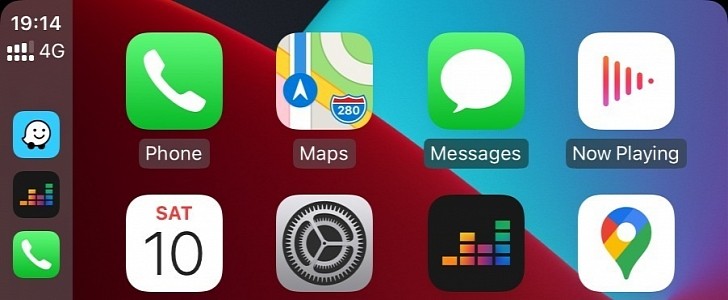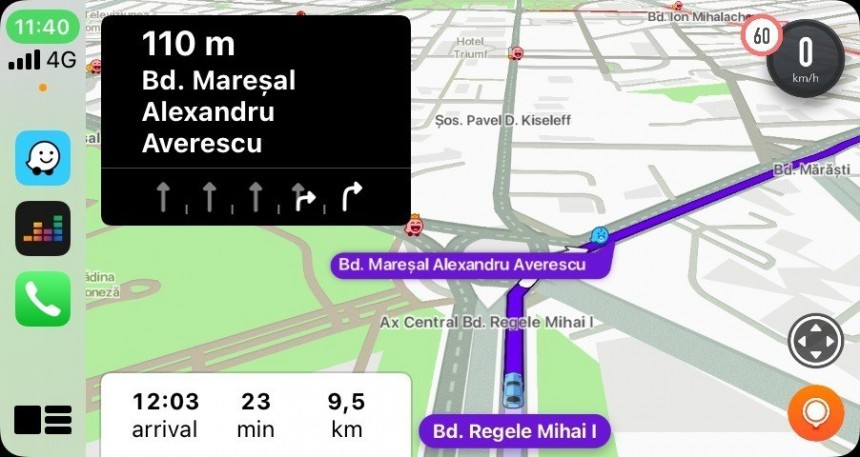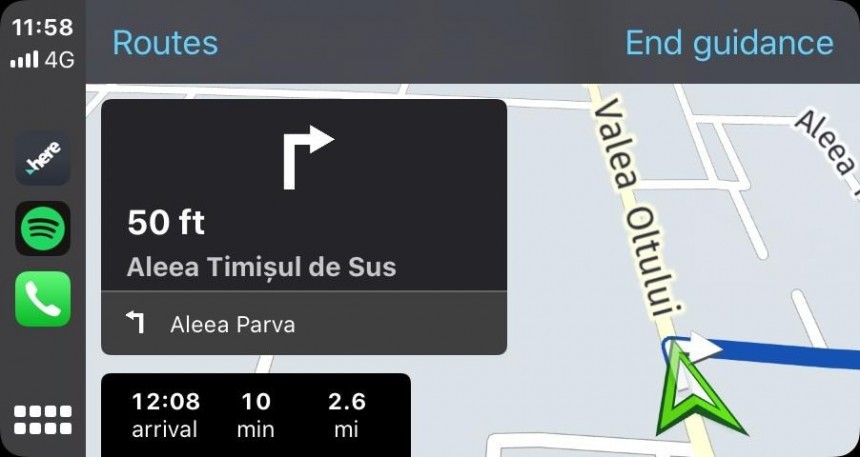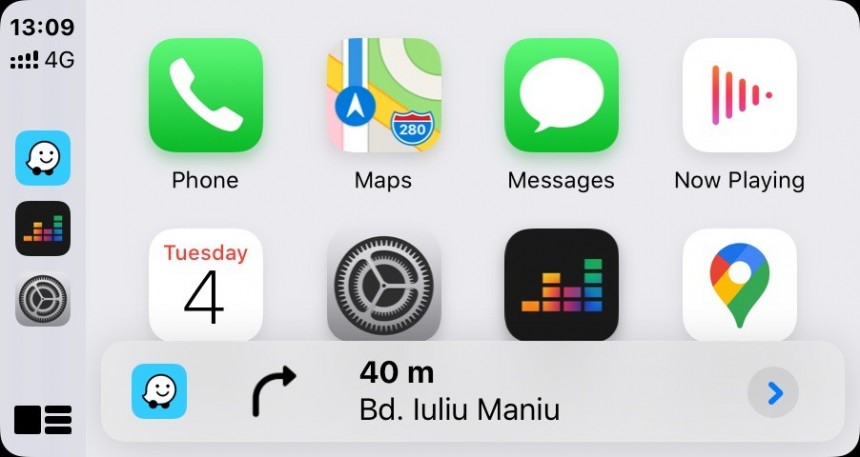Apple’s CarPlay has become a must-have for so many drivers out there, as it allows them to mirror the iPhone experience on the larger screen in their cars and therefore use applications like Google Maps, Apple Maps, Spotify, and Waze more conveniently.
Needless to say, CarPlay comes with the added benefit of voice commands, which means you can interact with all these apps hands-free through the Siri integration. And this is why CarPlay is so important overall, as it substantially reduces the distraction behind the wheel because it doesn’t require you to always look at the screen.
While there are no adoption figures available right now, CarPlay has become a common feature in modern cars, with owners of older vehicles also performing head unit upgrades just to get such functionality in their cabins.
But while CarPlay is making its way to more and more cars, there’s one thing some users seem to be increasingly worried about: can Apple kill it off at one point and therefore make it impossible for owners of compatible cars to use it behind the wheel?
Yes and no, and to better answer this question, it’s important to understand how CarPlay works.
As you already know, to run CarPlay in your car, you need the iPhone to be connected to the head unit. So the iPhone is the one doing all the hard work, with the head unit pretty much being in charge of displaying the projected content through the connection (either wired or wireless).
In other words, as long as your car manufacturer allows you to use CarPlay, then it all comes down to Apple to support this feature.
The Cupertino-based tech giant offers CarPlay at OS level, so it’s not a standalone app that can be downloaded separately (as was originally the case with Android Auto – Google itself has also changed this approach and is now offering Android Auto pre-loaded with the operating system). So in other words, CarPlay is deeply integrated into iOS, which means it also receives new features, bug fixes, and everything else as part of operating system updates.
So if Apple wants to drop support for CarPlay, the company just has to remove it from iOS and then ship this operating system update to your iPhone.
But Apple won’t obviously do this and there’s no reason to believe it plans to anyway, as CarPlay is a way to make sure the iPhone experience is expanded even beyond the screen of the phone.
And yet, there are two things that could cause additional struggles in the CarPlay world.
First of all, given CarPlay is built into the operating system, once Apple drops support for older iPhones, and these are no longer provided with new iOS updates, users are thus stuck with an older version of CarPlay too. This means they’re missing out on the latest improvements and CarPlay features simply because their devices are no longer supported.
The only way to get around this shortcoming is to get a new iPhone, though this obviously isn’t the most convenient solution, but given Apple drops support for older models every few years, it’s an investment we all eventually have to do in order to stay up-to-date with the latest tech.
On the other hand, Apple dropping support for your iPhone doesn’t mean CarPlay would no longer work in your car. Your iPhone will still connect to the head unit and rung CarPlay, only that you’re not getting the latest features. That’s all you’re losing.
And the second reason to worry about is the debut of a portless iPhone. People familiar with the matter claim Apple is working on an iPhone without the Lightning port, which for CarPlay users means the company would make it impossible to connect the smartphone to a head unit using a cable.
So unless your car supports the wireless CarPlay mode, you won’t be able to get this new iPhone until you purchase a dedicated adapter. And this gets us to the problem we discussed above, as some might decide to stick with an older iPhone because they need a cable connection, and the longer they do this, the bigger the chances for Apple to eventually drop support for their phones and therefore end up missing out on CarPlay improvements.
The debut of a portless iPhone should make the device much harder to hack, as many exploits are based on a direct connection via the Lightning port, but for CarPlay users, this switch isn’t necessarily the best news.
Apple, however, is yet to confirm the debut of the portless smartphone, so as far as the company is concerned, wired CarPlay is here to stay.
While there are no adoption figures available right now, CarPlay has become a common feature in modern cars, with owners of older vehicles also performing head unit upgrades just to get such functionality in their cabins.
But while CarPlay is making its way to more and more cars, there’s one thing some users seem to be increasingly worried about: can Apple kill it off at one point and therefore make it impossible for owners of compatible cars to use it behind the wheel?
Yes and no, and to better answer this question, it’s important to understand how CarPlay works.
In other words, as long as your car manufacturer allows you to use CarPlay, then it all comes down to Apple to support this feature.
The Cupertino-based tech giant offers CarPlay at OS level, so it’s not a standalone app that can be downloaded separately (as was originally the case with Android Auto – Google itself has also changed this approach and is now offering Android Auto pre-loaded with the operating system). So in other words, CarPlay is deeply integrated into iOS, which means it also receives new features, bug fixes, and everything else as part of operating system updates.
So if Apple wants to drop support for CarPlay, the company just has to remove it from iOS and then ship this operating system update to your iPhone.
But Apple won’t obviously do this and there’s no reason to believe it plans to anyway, as CarPlay is a way to make sure the iPhone experience is expanded even beyond the screen of the phone.
First of all, given CarPlay is built into the operating system, once Apple drops support for older iPhones, and these are no longer provided with new iOS updates, users are thus stuck with an older version of CarPlay too. This means they’re missing out on the latest improvements and CarPlay features simply because their devices are no longer supported.
The only way to get around this shortcoming is to get a new iPhone, though this obviously isn’t the most convenient solution, but given Apple drops support for older models every few years, it’s an investment we all eventually have to do in order to stay up-to-date with the latest tech.
On the other hand, Apple dropping support for your iPhone doesn’t mean CarPlay would no longer work in your car. Your iPhone will still connect to the head unit and rung CarPlay, only that you’re not getting the latest features. That’s all you’re losing.
So unless your car supports the wireless CarPlay mode, you won’t be able to get this new iPhone until you purchase a dedicated adapter. And this gets us to the problem we discussed above, as some might decide to stick with an older iPhone because they need a cable connection, and the longer they do this, the bigger the chances for Apple to eventually drop support for their phones and therefore end up missing out on CarPlay improvements.
The debut of a portless iPhone should make the device much harder to hack, as many exploits are based on a direct connection via the Lightning port, but for CarPlay users, this switch isn’t necessarily the best news.
Apple, however, is yet to confirm the debut of the portless smartphone, so as far as the company is concerned, wired CarPlay is here to stay.









